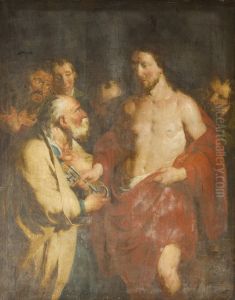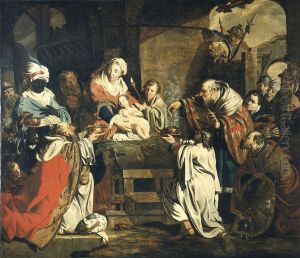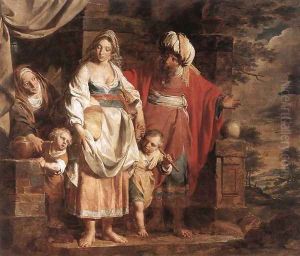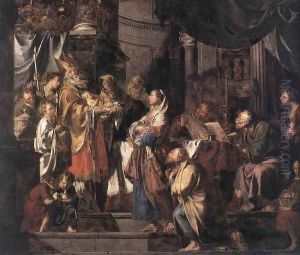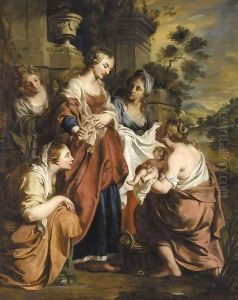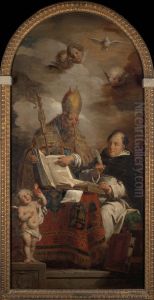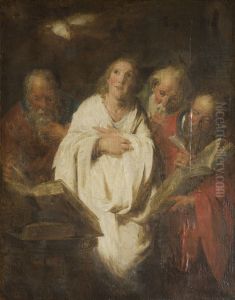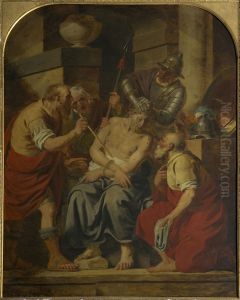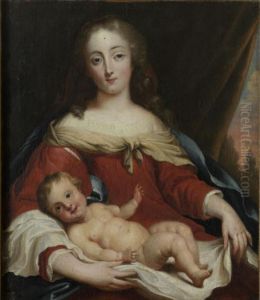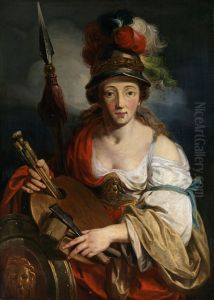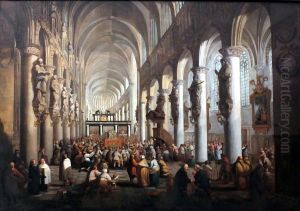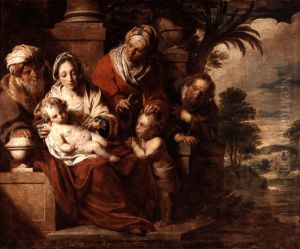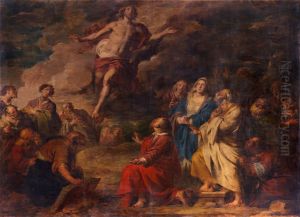Pieter Jozef Verhaghen Paintings
Pieter Jozef Verhaghen was a Flemish painter born in Aarschot on March 9, 1728. He is considered one of the last important representatives of the Flemish Baroque tradition, which had its roots in the 17th century with artists like Peter Paul Rubens. Verhaghen is primarily known for his religious and historical paintings, which exhibit a dramatic use of light and shadow, as well as a skilled depiction of human emotion and anatomy that are characteristic of Baroque art.
Verhaghen received his early training from the relatively obscure painter Balthasar Beschey in Antwerp. Later, he was heavily influenced by the works of Rubens and Anthony van Dyck, which is evident in his grandiose style and his use of color. In 1753, Verhaghen became a master in the Guild of St. Luke in Antwerp. His reputation grew, and he received commissions for altarpieces and other religious works from various churches in the Southern Netherlands. He also produced a number of large-scale historical paintings.
Throughout his career, Verhaghen taught many pupils and was regarded as an important teacher. He became a professor at the Academy of Fine Arts in Leuven in 1767 and later served as its director. His influence extended to many younger Flemish artists who would carry forward the grand tradition of Baroque painting into the late 18th and early 19th centuries. Despite the changing tastes of the time that began to favor Neoclassicism, Verhaghen remained true to his Baroque roots.
Verhaghen's works are characterized by their energetic composition and the dramatic contrast between light and dark, known as chiaroscuro. Some of his notable works include 'The Martyrdom of Saint Peter' and 'The Adoration of the Magi'. His paintings can be found in various museums and churches in Belgium and abroad.
Pieter Jozef Verhaghen passed away on April 3, 1811, in Leuven. His legacy as a Flemish painter is marked by his adherence to the Baroque style at a time when artistic tastes were evolving, and he is remembered for his contributions to religious and historical art in the Flemish tradition.
